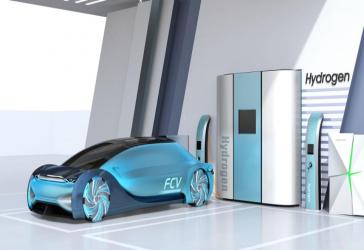
Hydrogen is fast approaching a tipping point.
Its potential as a fuel has long been acknowledged. And now, as the world races to limit the effects of global warming, its promise as an emission-free energy carrier is being rediscovered.
With hydrogen, we could decarbonize transport, heating systems and industrial processes – areas of energy use that are currently difficult to make green through renewable electricity.
And it is being championed by business leaders and politicians as an alternative fuel source that could help achieve truly decarbonized economies and societies.
It is easy to see why: when using hydrogen, the only emission is drinkable water.
Successful Tests
Japan is leading the way as it attempts to create a “Hydrogen Society”. Under the country’s leadership, hydrogen will be a key topic of discussion at this year’s G20 meeting in Osaka.
Mitsubishi Heavy Industries (MHI) is working to develop gas turbines that use a blend of hydrogen and natural gas.
Mitsubishi Hitachi Power Systems has already successfully tested the burning of a stable fuel mix of 30% hydrogen with natural gas in a large-scale gas turbine, reducing its CO2 emissions by 10%.
It aims to have a turbine that can run on pure hydrogen by 2024.
The Next Step
And the oil and gas industry is exploring alternatives to its traditional sourcing of hydrogen from natural gas. For example, Shell is building the world’s largest electrolyzer at its Rhineland Refinery in Wesseling, Germany.
The 10MW device will use electricity rather than natural gas to produce hydrogen that will then be used in the refinery’s production processes. It will be able to produce 1,300 tonnes of hydrogen a year.
Hydrogen stands ready to be the next step in energy evolution, which has moved from coal, to natural gas, and most recently to renewables.
Fill out the form below to get your own copy of MHI’s latest ebook, Hydrogen – The Next Step in Energy Evolution, which explores the challenges and opportunities that come with developing a Hydrogen Society.
